Willow spirea: description, varieties and agricultural technology
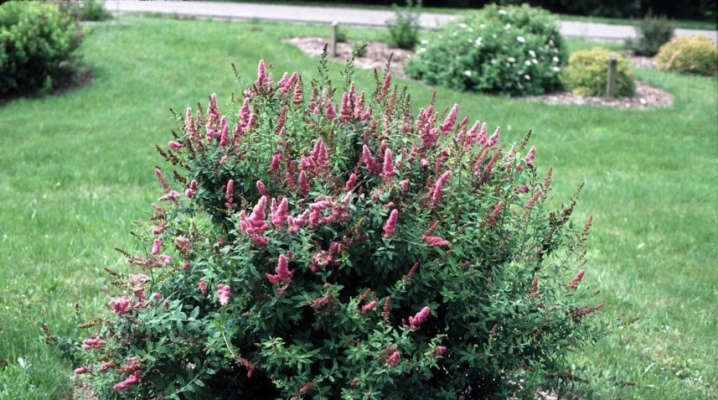
Spirea willow leaf (Latin name Spiraea salicifolia) belongs to the numerous pink family. The plant looks like a not very tall shrub with a picturesque crown and graceful inflorescences. In addition to its striking appearance, the bush is unpretentious and easy to care for.
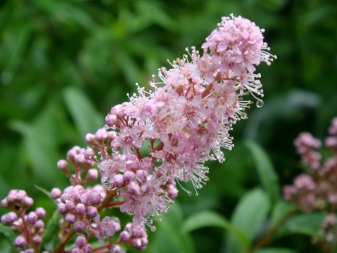
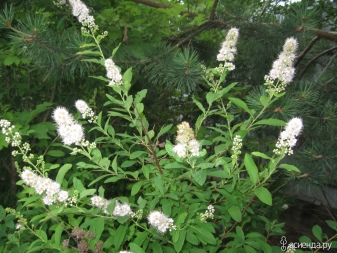
Description
Belongs to willow spirea to deciduous crops, its maximum height is 2.5 m. Its crown is dense, rounded, with ribbed shoots of a brown-yellow tone. The leaf plates have a lanceolate shape with a wedge-shaped base and pointed tops. They grow alternately, on short petioles. The edges of the leaves have a sharp-pollen shape, the surface of the plate itself is smooth.
The upper side is dark green, the lower is colored light green. The length of the leaf is on average 5-7 cm, although sometimes it is 10-11 cm, and the width is 1-3 cm. The flowers are in the form of bells, which gather in volumetric panicles having cylindrical or pyramidal outlines. Their length can reach 20-25 cm.
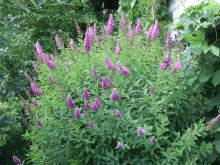
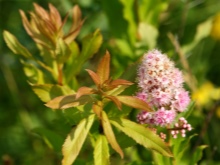
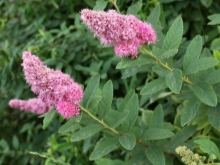
The flowering shrub begins in early or mid-summer and is distinguished by its abundance and duration.
The buds of willow spirea are white or pink in color. The bush begins to bloom in 4-5 years after planting. After the end of flowering, small green fruits with flat brown seeds inside ripen on the shoots. The roots of the plant are located near the surface. In its natural environment, willow spirea has a fairly wide growing area: it is almost the entire territory of Europe and Asia.
The species also became widespread in North America. He prefers clay and moist soil near water bodies. Like willow, spirea often grows in coastal areas of rivers, lakes or swamps. The species belongs to frost-resistant. This variety is characterized by rather rapid growth.


Popular varieties
Willow spirea does not have a wide varietal variety, but all its forms are distinguished by beautiful and lush flowering, as well as voluminous luxurious crowns.
"Alba"
Representatives of the variety have a height of about 2 m, and the crown is the same size. It has the shape of a wide oval with elongated bright green leaf plates. The shrub is distinguished by its rapid growth, the roots also grow in a fairly short time. Alba (Latin for "white") stands out for its snow-white paniculate inflorescences, they appear at the end of June on young shoots. The shrub blooms in abundance, the buds delight the eye with their beauty for more than a month.
The plant lends itself well to pruning, without losing its decorative effect. Normal garden soil is suitable for the variety.
It is better to choose a plot that is well lit or slightly shaded; in the absence of light, flowering will be scarce. Snow-white shrubs look beautiful in the form of a hedge, group planting, or just a separate bush on a green lawn background.
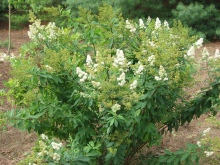

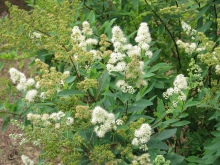
"Grandiflora"
The height of the shrub is 1.5-2 m. Shoots are erect, with light brown bark, on young branches it is reddish-yellow. The crown of the plant is quite dense, rounded. The leaf plates have a solid surface, their size is quite large, unlike other varieties. The shape of the leaves is lanceolate, with a pointed apex.
The top side has a richer dark green color, while the back side is much lighter. In autumn, the crown takes on orange-red hues. Buds "Grandiflora" (which means large-flowered) are large, they are collected in lush light pink cylindrical inflorescences. Panicles can be up to 20 cm long. The flowering shrub lasts about 3 weeks.
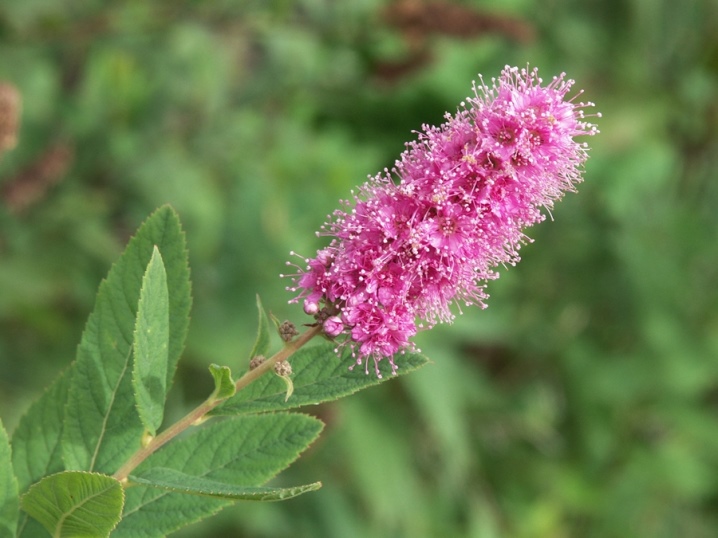
The variety is characterized by rather rapid growth, but relative fragility. The life cycle lasts 15-20 years. The plant prefers sunny areas, but can grow in partial shade. Spirea does not require special conditions, but prefers well-moistened soil. The shrub is perfectly adapted to the conditions of the city and does not suffer from increased gas pollution.
It also has a high threshold of winter hardiness. The variety is used for landscaping streets, parks and squares.
Spirea "Grandiflora" is also planted in apiaries, because this plant is an excellent honey plant.
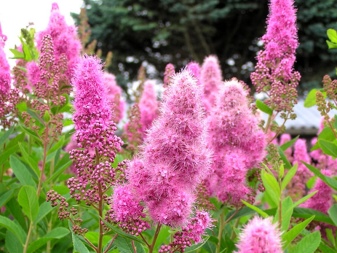
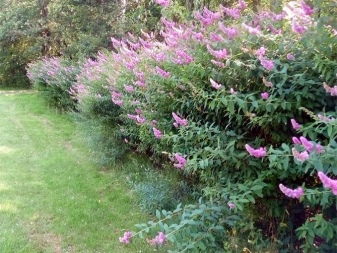
"Billard"
The variety belongs to late-flowering hybrids of willow spirea. In height, the bush can reach up to 2.5 m. Shoots are straight, spreading, densely covered with leaves, old branches are bare, with pronounced ribbing. The leaf plates have dusty edges, the shape is elongated, lanceolate, their length is about 10 cm. The underside of the plates is painted in grayish tones.
With the beginning of autumn, they acquire brown-red shades. The buds do not differ in special sizes, but have a pleasant sweetish aroma. Dense panicle inflorescences have a narrow elongated shape, reaching 20 cm, and a delicate bright pink color. Lush bloom begins in late summer and lasts almost until mid-autumn. Representatives of the variety are distinguished by their photophilousness, endurance and drought resistance.
In addition, spiraea is very resistant to frost and completely unassuming to care for. The shrub is planted as a hedge, as well as in single and group plantings.
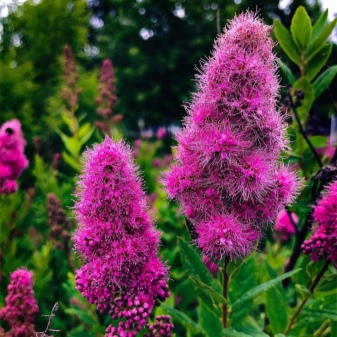
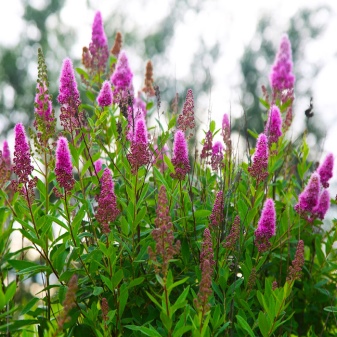
Growing rules
Willow spirea is undemanding to the conditions of detention, but nevertheless, for normal growth, as well as lush and long flowering, it is worth paying a little attention to it. In order for the plant to grow well and quickly, some nuances must be taken into account when planting a shrub.
- The timing for planting a shrub should be selected in the spring, before the formation of buds on the shoots, or in the fall, after the plant has shed its foliage. The optimal time is a cloudy morning or evening, as well as a rainy day.
- The choice of location mainly depends on the type of plant, but in general, willow spirea prefers well-lit areas.
- Soil preparation consists of mixing two parts of soil, one part of sand and the same amount of peat. This mixture works well for rooting shrubs. It is also necessary to provide the plant with drainage.
- The landing pattern depends on its type: single or group, but the work algorithm is the same. The holes make a little more than the root system of the seedling by about a third. The roots should be placed spaciously in the groove, and the root collar should be on the same surface with the ground. The soil around the seedling is crushed and watered, it is also worth applying a layer of mulch. For group plantings or in the form of a hedge, it is necessary to take into account the size of the growing bushes and leave a distance of 0.5-1 m between them.
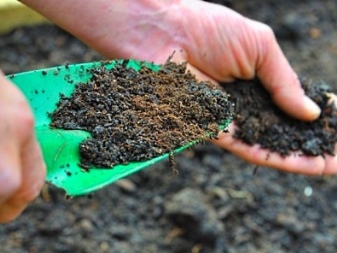
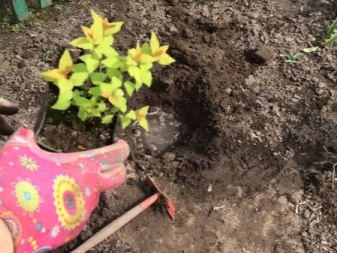
Care features
Willow spirea belongs to unpretentious plants and does not require special care, but still, like any culture, it needs certain conditions for normal growth.
Watering
The shrub loves well-moisturized soil. An adult plant needs about 15-20 liters of water per week. During the heat, the amount of moisture should be increased. Young plants should be watered more often until they take root well. Although in nature the bush grows on wet soils, but home crops should still be protected from stagnant water.
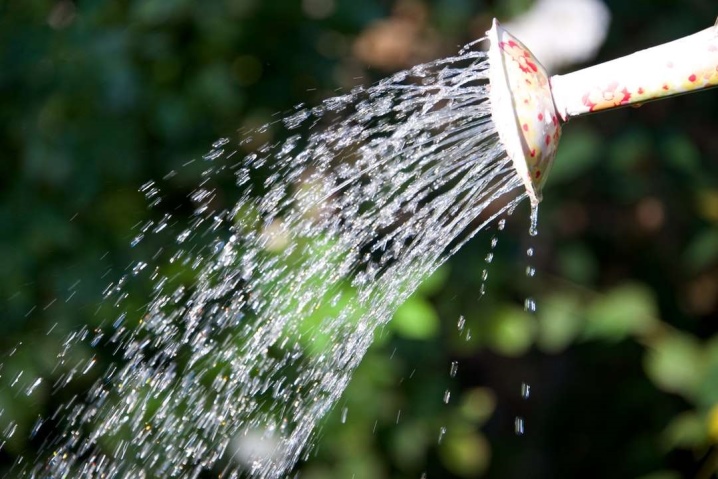
Top dressing
Fertilize the plant in the spring, before laying the buds.For this, complex mineral and organic dressings are used: 10 liters of mullein are dissolved in 6 liters of water and superphosphate is added to a bucket of this mixture in an amount of 7-10 g. If the bush is planted in fertile soil, it may well grow for several years without top dressing.
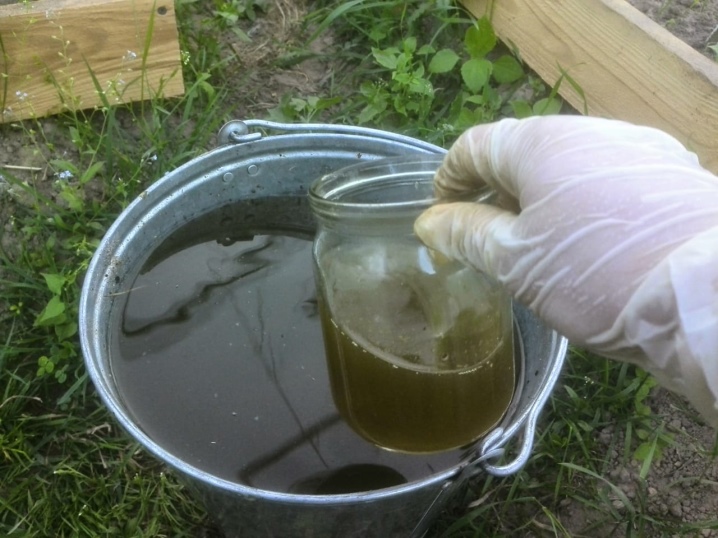
Pruning
The shrub is easy to cut. The procedure is carried out in the autumn, after the end of flowering, or in early spring. Only bushes over 4 years old are pruned. It is worth remembering that shoots that have faded cannot be cut off, this will entail the formation of new lateral stems with small and faded inflorescences. Leave a shoot 20-30 cm long. If you do not do such pruning, the shrub will lose its decorative shape, long shoots will slope in different directions and bend to the ground.
By cutting only the tops of the stems, very thin young shoots with small inflorescences will form.
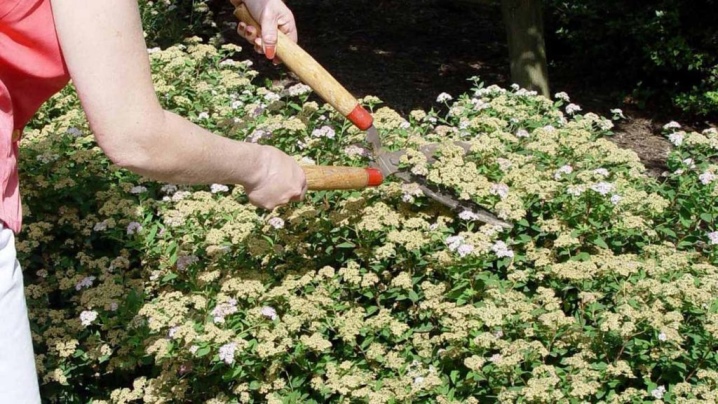
Preparing for winter
All varieties of willow spirea are distinguished by good indicators of frost resistance and normally hibernate without shelter, even at -40-45 ° C. But if the winter is expected to be snowless and frosty, it is still worth insulating the bushes, especially young ones. A layer of mulch is applied around the trunk, the branches of the plant are tied so that they stick together, and the bush itself is covered with agrofibre.
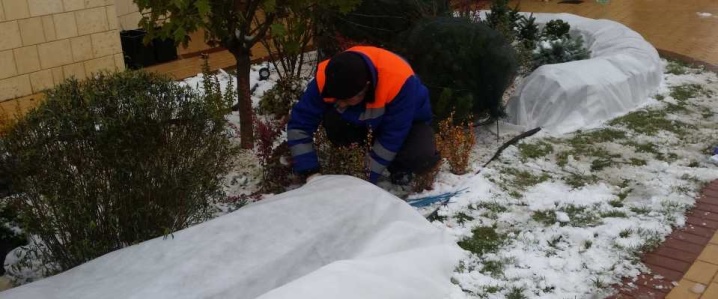
Reproduction methods
There are several ways to propagate willow spirea.
- The seeds of the plant are sown for seedlings in March. After two weeks, shoots should appear, and after another 2-3 months, the shoots dive and plant in open soil. Saplings grow very quickly, flowering occurs in about 2-3 years.
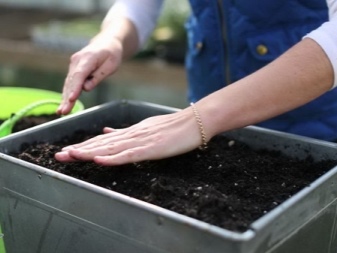
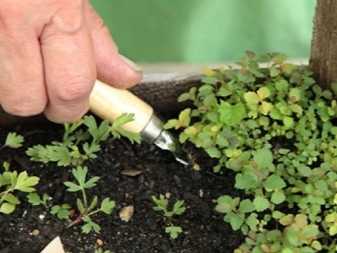
- Spirea is propagated by cuttings quite often, this method makes it possible to preserve all the characteristics of the variety. In addition, shrubs grown in this way bloom much faster the next season. Parts of slightly woody branches 10-15 cm long are used as cuttings. The lower cut is treated with drugs that stimulate root formation and planted in the soil. The procedure is performed around July, then the root system of the seedling will have time to fully form by the fall.
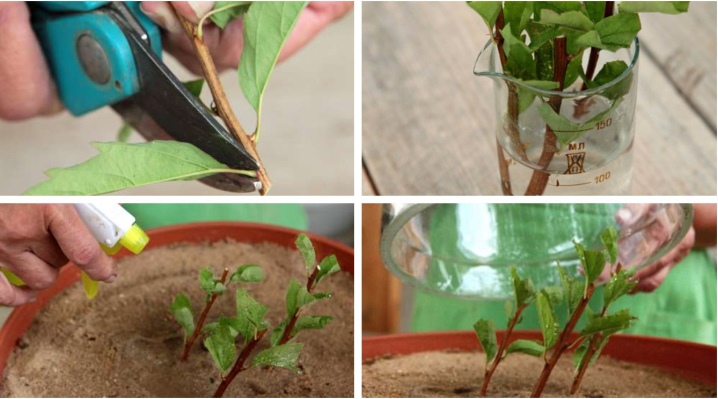
- A shrub is planted with layering, if there is no need for a large number of seedlings. For this, strong lateral shoots are bent to the ground, pinned in this position and sprinkled with earth. Providing regular moisture in the fall, the sprouts can be separated from the mother bush and planted in open soil.
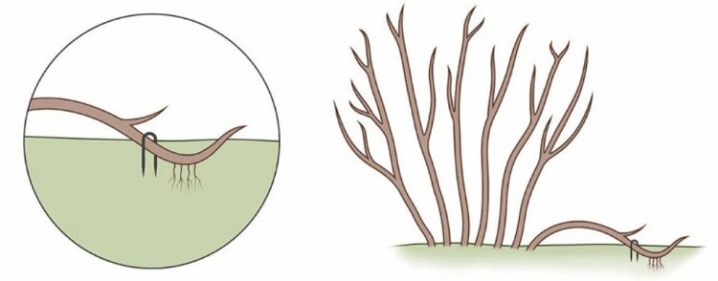
- By dividing the bush, you can also propagate spirea. To do this, in the fall, the bush is dug up, cut into several parts with a sharp pruner, and each is planted separately in its place of growth.
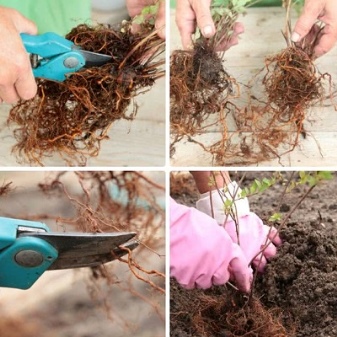
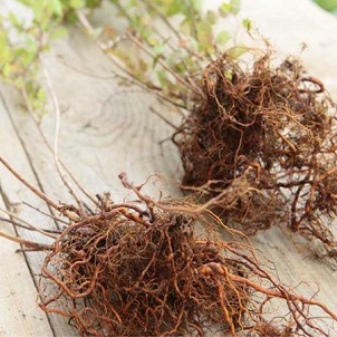
Diseases and pests
Spiraea willow leaf is quite resistant to a variety of diseases, but can be affected by pests.
- The spider mite damages the inflorescences, causing them to dry out and fall off the leaves. Insects are especially active in hot weather. The fight against them consists in the use of insecticidal preparations "Phosphamide", "Karbofos" or "Akreks".
- The leafworm annoys the plant in May, eating the flesh of the leaf plates. They use Pirimor against her.
- Aphids feed on spirea juice, from which the plant loses strength and dries up. Protect the shrub with a saturated soap or tobacco solution, and if there are a lot of insects, insecticides are used.
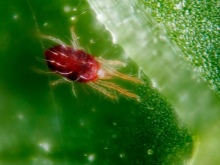
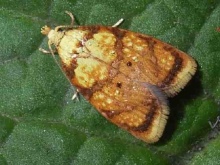
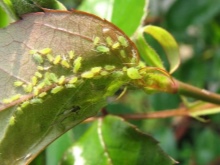
Application in landscape design
Spirea wavy is used by gardeners more and more often due to its beautiful appearance and undemanding care. Its application is quite varied. The shrub looks equally beautiful both in single and group plantings, when planted in the form of curbs or hedges. By combining different varieties with multi-colored inflorescences and leaves, you can create spectacular compositions. Willow spirea looks beautiful in joint plantings with other shrubs, as well as flowering plants.
Spirea willow with its unusual appearance will serve as a real decoration of any site, without requiring special care.
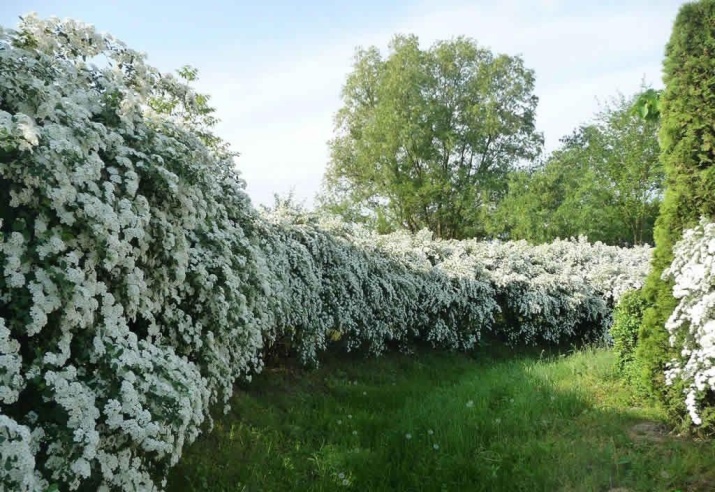

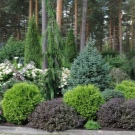
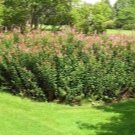
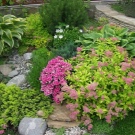
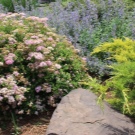
You can learn more about spirea in the following video.



































































The comment was sent successfully.